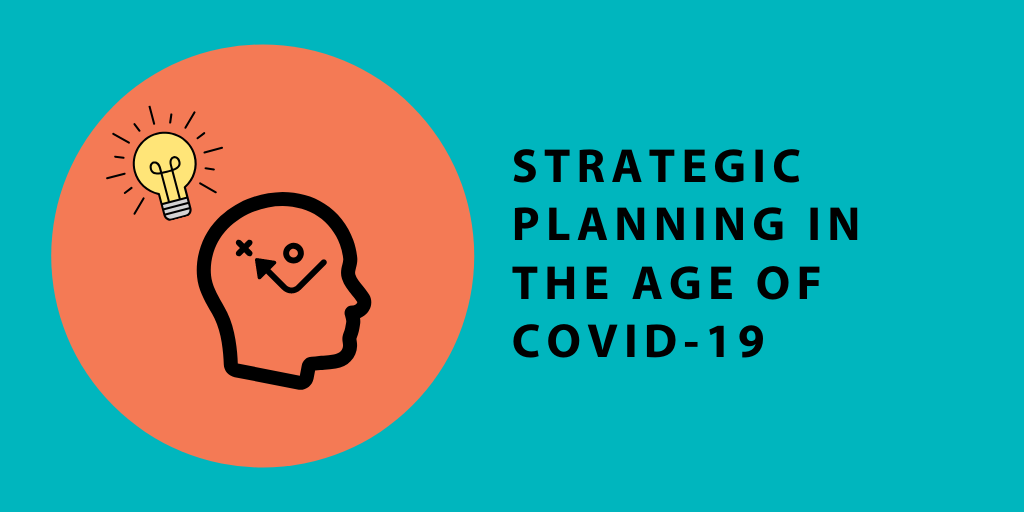
Here’s a situation you may be in right now: You, your colleagues, and stakeholders spent a lot of time and energy developing a thoughtful, forward-thinking strategic plan to guide your organization as it grows and evolves in the future.
However, it’s unlikely a global pandemic emerged as a “threat” in your SWOT analysis. We also know that the murder of George Floyd has drawn heightened attention to racism and is prompting many—including The Improve Group—to reflect on how they show up in the world and what their role is in undoing systemic oppression. The response to COVID and the anti-racism movement are deeply affecting nonprofits, foundations, and government agencies, many of which are setting aside their original plans for the year as they work with and listen to communities. This can carry with it implications for an organization’s strategic plan and activities. So, what does that mean for strategic planning?
First of all, know that your effort in creating a plan is valuable. Your engagement with stakeholders to inform the plan has value beyond the plan itself—the processof engaging stakeholders deepened relationships that are serving you now and will into the future. Your mission, vision, and values are likely still relevant today and can guide your response to COVID and help define the role your organization plays in anti-racism.
Implementing a current strategic plan: How do you know what to keep and where to adapt or let go?
If you have a new plan or a couple years left in your current one, you could cross-walk your current strategic plan with your current situation and what you perceive as important, lower priority, and unknown given COVID and/or the changing role your organization could play in anti-racism. Here’s a helpful “Annotated Strategy Triage Tool” from the Center for Community Investment.
Also consider the difference between your overarching strategic directions and your action/implementation plan. You may be able to adapt implementation while staying the course of your strategic directions.
Winding down a current strategic plan: Where do you turn next for guidance on decision-making?
Depending on the level of change facing your organization and its work, a new 3- to 5-year strategic plan may be the right next step. We would recommend, however, only planning activities for Year 1. Your overarching goals in the next year may hold for another 3-5 years—but how you get there may only be clear for the next year. You can also embed a focus on anti-racism and equity into your planning. For example, you could develop a racial equity action plan, which puts “a theory of change into action to achieve a collective vision of racial equity,” according to Government Alliance on Race and Equity, which published this racial equity action plan manual. Or, consider a single strategic plan goal focused on making your organization’s internal operations more equitable. Check out Equity In The Center’s “Awake to Woke to Work” guide, which states, “The impact of structural racism is evident not only in societal outcomes, but in the very institutions that seek to positively impact them.”
If your organization needs something shorter-term, these tools could serve as consensus-building activities and provide the guidance you need:
- A 1-year strategic plan could provide high-level guidance without requiring you to plan further into the future than feels comfortable.
- A strategy screen can serve as criteria to help in decision-making for the many choices you may be facing. A funder, for example, could use a strategy screen to apply consistent, values-driven criteria to potential funding opportunities.
- Scenario planning involves considering possible situations and what your organization’s response would be, essentially determining an “if this, then that” plan before the scenario occurs.
- A new logic model can be useful if your organization has a clear program strategy but wants to put its work to paper and track indicators. This could be a useful tool for a service provider that drastically changed activities in order to continue fulfilling its mission in light of COVID-19’s impact on its community, for example.
There are many more resources out there for rapid response and adapting work to have an anti-racism or equity lens. We are learning, too. We also know each organization’s situation is unique—that’s why in all our projects, we take time in an Inception Phase to consider the above factors and determine the best approach.
The Improve Group specializes in providing strategic planning to all types of organizations—from a disability services provider to a human trafficking task force. Our strategic planning team meets regularly to discuss emerging trends and needs in the field.
